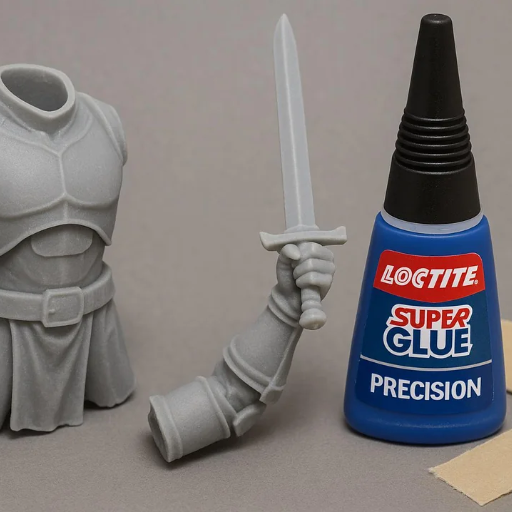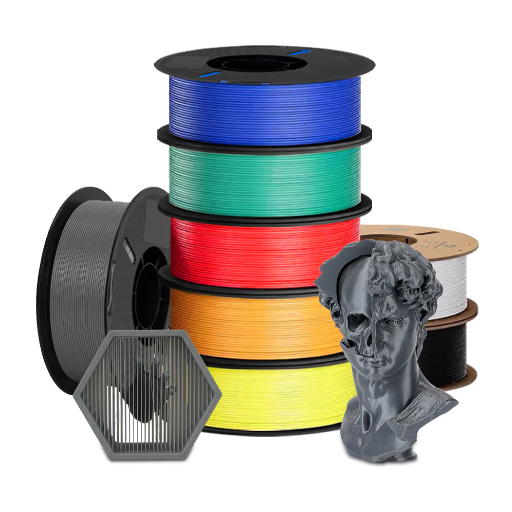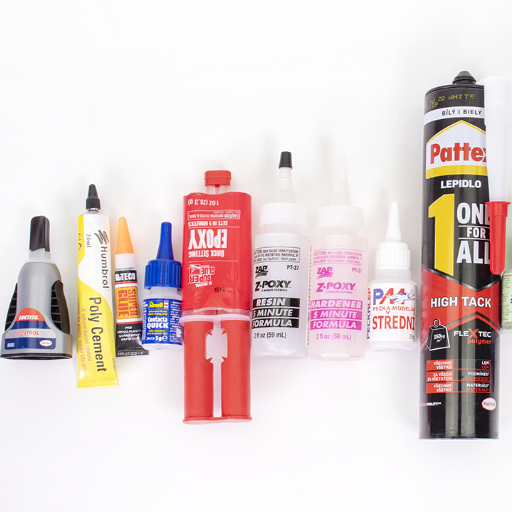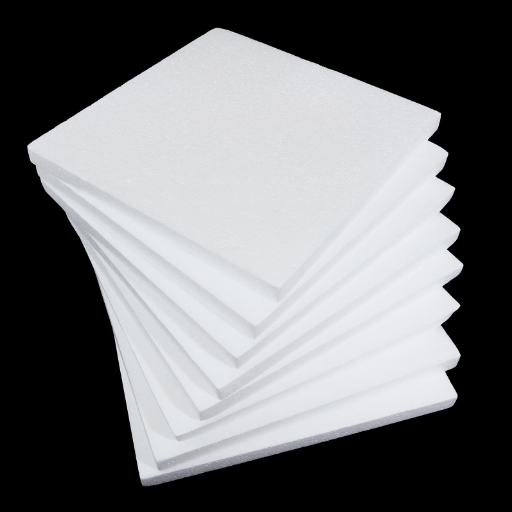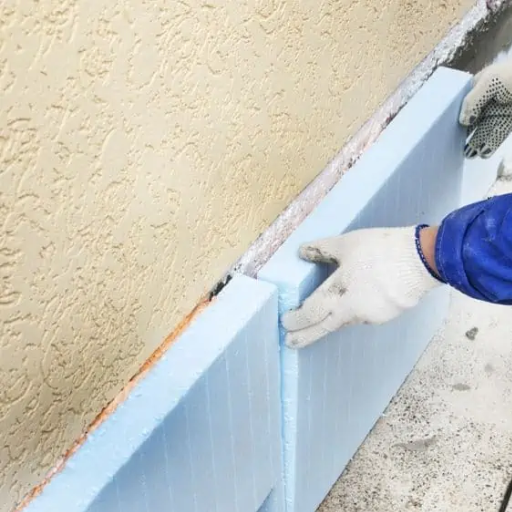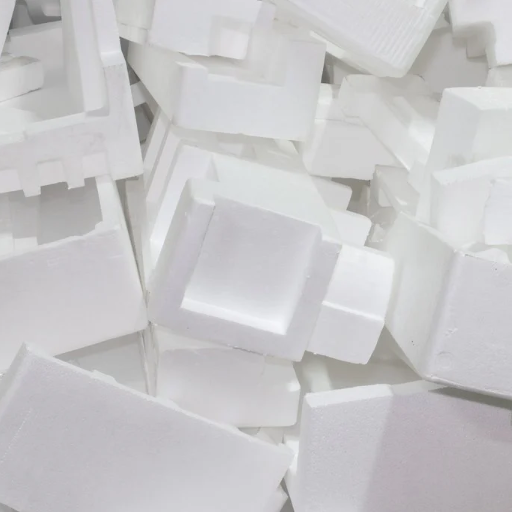Whether you are working with cement or concrete, achieving a solid bond is vital for the structural integrity and longevity of the material. Selecting the right adhesive glue for repairs, DIY projects, or larger construction assignments provides a huge advantage. In this article, I will outline the best adhesives on the market, focusing on their individual characteristics and how to apply them to specific projects. From epoxy-based glues to polyurethane adhesives, we will provide a thorough explanation to enable you make an informed decision on the most suited product for you. By the end of this post, you will have gained insights on the best practical tips for successful cement and concrete bonding.
What are the top types of glue for concrete and cement surfaces?

Epoxy-Based Adhesives
Renowned for their exceptional bonding strength, epoxy adhesives are ideal for heavy-duty repairs and constructions. They are highly durable, weather-resistant, and capable of adhering to both dry and damp concrete surfaces.
Polyurethane Adhesives
These adhesives are versatile and provide strong, flexible bonds. They are particularly effective for outdoor applications as they can withstand temperature fluctuations and exposure to moisture.
Construction Adhesives
Designed specifically for construction projects, these adhesives are easy to apply and offer strong initial tack. They work well for attaching materials like bricks, stone, or concrete blocks.
Acrylic Adhesives
Acrylic-based adhesives are best suited for moderate-strength applications. They cure quickly and provide excellent adhesion for smaller repairs or decorative projects on concrete surfaces.
By choosing the right type of adhesive based on your project requirements, you can ensure lasting and reliable results.
Epoxy-based adhesives for concrete
Epoxy-based adhesives are renowned for their exceptional strength and durability, making them an ideal choice for demanding concrete applications. These adhesives are composed of resin and hardener, which chemically react to form a rigid, high-strength bond capable of withstanding heavy loads and exposure to environmental elements. They are commonly used in structural repairs, anchoring systems, and bonding old and new concrete surfaces. Epoxy adhesives offer superb resistance to water, chemicals, and temperature fluctuations, ensuring a long-lasting hold even in challenging conditions. For optimal results, surface preparation—such as cleaning and ensuring dryness—is crucial before application. These adhesives are versatile and trusted across construction, industrial, and DIY projects, delivering reliable performance for both small and large-scale needs.
Polyurethane construction adhesives
Polyurethane construction adhesives are highly versatile, providing strong bonds for a wide range of materials including wood, metal, concrete, ceramic, and plastics. Known for their exceptional durability, they are resistant to moisture, temperature changes, and vibration, making them ideal for both indoor and outdoor applications. These adhesives cure through the exposure to moisture, forming a tough, elastic bond that tolerates movement and flexing, ensuring longevity even under stress. Popular for construction, remodeling, and repair projects, polyurethane adhesives also stand out due to their gap-filling capabilities, which allow them to perform effectively on uneven surfaces. For best results, surfaces should be clean and slightly damp before application to optimize the curing process. Their blend of strength, flexibility, and resilience has made them a go-to solution for professionals and DIY enthusiasts alike.
Acrylic-based bonding agents
Acrylic bonding agents have quick-set times, making them useful in applications where time is limited. These adhesives provide excellent durability and are resistant to environmental factors such as UV radiation, weather changes, and extreme temperatures, allowing for both indoor and outdoor applications. They can bond metals, plastics, ceramics, and glass, offering versatility in construction. Their chemical makeup also affords these adhesives strong structural bonds that resist vibrations and stress over time. Due to their resistance, acrylic adhesive is often used within the automotive, construction, and electronics industry. Surfaces should be cleaned and dried prior to performance to achieve the best results.
How to choose the best concrete bonding agent for your project?

Consider each of the following points carefully when selecting a concrete bonding agent for your project:
Type of Bond Required – Decide if a mechanical or chemical bond is necessary. For stronger, more permanent applications, chemical bonds are best. Lighter or less intensive projects may get by with a mechanical bond.
Surface Condition – Look at the state of the concrete surfaces. Older concrete surfaces or rough surfaces will need bonding agents with high adhesion properties while clean and dry surfaces can maximize effectiveness.
Application Environment – Account for the conditions of exposure like humidity and temperature as well as possible chemical exposure. Some bonding agents do better in extreme conditions while others work best when environmental factors change over time.
Cure Time – Determine the required cure time and how it may affect tight deadlines. Fast-setting agents are time-saving but do not work with every application.
Compatibility – The bonding agent must work with the existing concrete and any other new materials that will be applied.
By considering these points, selecting a concrete bonding agent that meets the demands of your project becomes effortless.
Factors affecting adhesive strength on concrete
Several key factors influence the adhesive strength of bonding agents on concrete surfaces, ensuring optimal performance:
Surface Preparation: Properly cleaning and preparing the concrete surface is crucial. Dirt, grease, oils, or loose particles can weaken the bond. Mechanically roughening the surface or using etching methods enhances adhesion by creating a textured profile for the bonding agent.
Moisture Levels: The moisture content of the concrete significantly impacts adhesion. Excess moisture can dilute the bonding agent and hinder its ability to form a strong bond. Many products recommend either dry or slightly damp but not overly wet surfaces for application.
Curing Conditions: Environmental factors like temperature, humidity, and curing time play a primary role in the bonding process. Extreme temperatures or insufficient curing can result in reduced adhesive strength or uneven bonding.
Bonding Agent Selection: Using the right bonding agent type is essential. Epoxy-based agents generally offer the highest strength, while latex-based options are often better for flexibility and waterproofing.
By addressing these factors and closely following manufacturer guidelines, adhesive strength on concrete can be maximized, ensuring long-lasting and robust results.
Waterproof vs. non-waterproof options
When deciding between waterproof and non-waterproof adhesives, it is crucial to consider the specific application requirements. Waterproof adhesives are designed to resist moisture and are ideal for outdoor projects or areas exposed to high humidity, such as bathrooms and kitchens. These adhesives, often epoxy or polyurethane-based, provide excellent durability and resistance to water ingress, ensuring long-term performance in challenging conditions.
Non-waterproof adhesives, on the other hand, are better suited for indoor applications where water exposure is minimal. They are typically easier to apply and more cost-effective but lack the resilience needed for wet environments. Latex-based adhesives are a common choice for such cases, offering flexibility while remaining suitable for dry spaces.
Balancing factors such as environmental conditions, material compatibility, and intended usage will help ensure the right adhesive type is selected for a specific project, enhancing both functionality and longevity.
Considering curing time and workability
Curing time and workability are critical factors in choosing the right adhesive for a project. Curing time refers to the duration required for the adhesive to reach its full strength and functionality. Quick-curing adhesives, such as cyanoacrylates, are ideal for time-sensitive projects but may provide limited repositioning opportunities. On the other hand, adhesives with longer curing times, like epoxies, allow for greater flexibility during application but require patience before achieving full strength.
Workability, defined as the ease with which the adhesive can be applied, varies depending on its formulation. For example, spray adhesives offer quick application for larger surfaces, while liquid and gel forms provide precision for intricate tasks. To ensure the best results, always consider the project requirements, temperature, and humidity levels, as these can significantly influence both curing time and workability. Combining these factors will help optimize the adhesive’s performance and efficiency during application.
What are the best methods for applying glue to cement surfaces?
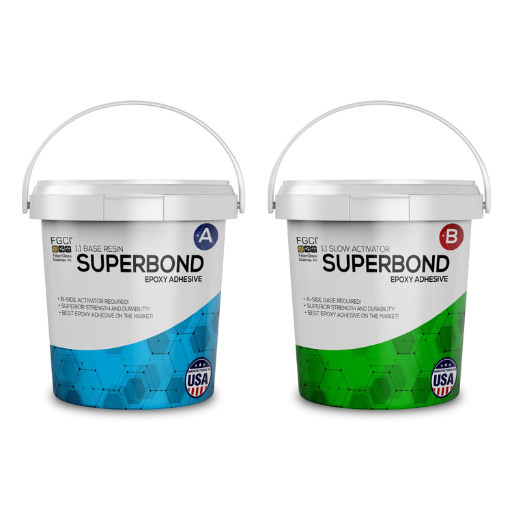
When applying glue to cement surfaces, proper preparation and technique are crucial for achieving a strong bond. First, clean the cement surface thoroughly to remove any dust, debris, or grease that could interfere with adhesion. Next, choose an adhesive formulated specifically for cement or masonry, such as epoxy or construction adhesive. Apply the glue evenly using a trowel, brush, or caulking gun, depending on the adhesive type and project size. Ensure there is consistent coverage without excessive buildup. Finally, press the materials together firmly and allow the adhesive to cure as per the manufacturer’s instructions, considering environmental factors like temperature and moisture.
Preparing the concrete surface for optimal adhesion
Achieving strong adhesion on a concrete surface starts with thorough cleaning to remove dirt, oil, grease, or any contaminants. Pressure washing or scrubbing with a stiff brush and an appropriate cleaning agent is highly effective for this purpose. Ensure the surface is completely dry before proceeding. For uneven areas, use a grinder or sandpaper to smooth the surface, creating an even base for the adhesive. Filling cracks or holes with a proper repair compound can further enhance bonding. Once the surface is prepared, ensure it is free of dust or debris by vacuuming or blowing it clean. A priming agent may also be recommended, depending on the adhesive type, to optimize adhesion.
Techniques for applying different types of concrete adhesives
Epoxy-Based Adhesives
Epoxy adhesives are highly durable and suitable for heavy-duty bonding. Begin by mixing the adhesive components as directed, ensuring a consistent blend. Apply the epoxy using a putty knife, trowel, or brush, depending on the surface area and project requirements. For best results, work quickly, as epoxy can set rapidly. Press the materials firmly together to establish a secure bond, and allow sufficient curing time per the manufacturer’s instructions.
Polyurethane Adhesives
Known for their flexibility and strong bonding capabilities, polyurethane adhesives are ideal for materials exposed to stress or movement. Apply the adhesive directly from the tube onto the surface in a uniform bead or thin layer. Immediately press the surfaces together, ensuring even distribution. Excess adhesive can be wiped away with a cleaner specified by the manufacturer. Allow the bond to cure in a moisture-friendly environment, as polyurethane cures better with some humidity.
Acrylic-Based Adhesives
Acrylic adhesives are fast-setting and suitable for smaller projects or repairs. These adhesives are typically applied using a caulking gun or similar tool for precision. After applying the adhesive, press and hold the surfaces together for a few minutes to ensure proper contact. Acrylic adhesives are less forgiving during repositioning, so precise application is key. Full curing usually occurs within 12-24 hours, depending on the product.
Each adhesive type has unique properties, so always refer to the product’s directions for optimal application techniques. Proper application ensures a long-lasting bond and project success.
Ensuring proper curing and bonding
When ensuring proper curing and bonding, the process begins with creating a clean and dry surface, as contaminants like dust, oil, or moisture can weaken the adhesion. Temperature and humidity also play critical roles; most adhesives cure best in controlled, room-temperature environments unless specified otherwise. During the curing phase, it’s crucial to avoid disturbing the bond to allow the adhesive to fully set and achieve maximum strength. Depending on the type, adhesives may require clamping or weight application to maintain pressure throughout the curing period.
Which adhesives work best for attaching wood to concrete?

For attaching wood to concrete, construction adhesives like polyurethane-based adhesives or epoxy adhesives are among the most effective options. Polyurethane adhesives provide strong, durable bonds and are resistant to moisture, making them ideal for environments with variable conditions. Epoxy adhesives, while more labor-intensive to apply, excel in creating extremely high-strength, structural bonds. Additionally, liquid nails or specialized masonry adhesives can also be considered for less heavy-duty applications.(Recommended: Loctite Glue)
High-strength epoxy options for wood-to-concrete bonding
When bonding wood to concrete, selecting the right high-strength epoxy is essential for durability and performance.
Loctite Epoxy Metal/Concrete: This two-part epoxy is designed for heavy-duty applications, forming strong and lasting bonds. It resists impact and vibration, making it suitable for both indoor and outdoor use.
PC-Concrete Epoxy Adhesive: Known for its structural strength, PC-Concrete works effectively on vertical and horizontal surfaces. It is moisture-resistant and cures to a highly durable finish.
Gorilla Heavy-Duty Construction Adhesive : Offering versatile use, this adhesive delivers excellent bonding strength on uneven surfaces and can withstand harsh conditions. Its quick-set formula makes it convenient for time-sensitive projects.
For optimal results, always clean both surfaces thoroughly and ensure proper mixing of the adhesive components as instructed by the manufacturer.
Polyurethane adhesives for wood and concrete
Polyurethane adhesives are highly effective for bonding wood and concrete due to their strong and flexible properties. These adhesives expand as they cure, filling gaps for a secure bond that can endure environmental stresses like moisture, temperature fluctuations, and heavy loads. Their water-resistant qualities make them suitable for both indoor and outdoor applications.
For best results, surfaces must be clean, dry, and slightly roughened to improve adhesion. Most polyurethane adhesives require clamping during the curing process, which typically takes 24–48 hours to achieve full strength. Popular brands, include Loctite PL Premium, known for its high strength and durability even on porous surfaces, and Gorilla Glue, which offers exceptional waterproofing and versatility. Whether tackling DIY projects or professional construction, polyurethane adhesives deliver reliable bonding performance across different materials.
How to bond metal to concrete effectively?

To bond metal to concrete, first, clean the surfaces to eliminate any markings, grease, or debris that would otherwise cause poor adhesion. Then, get an epoxy or polyurethane adhesive, or any adhesive that works well for metal to concrete application. Spread the adhesive evenly on the metal surface and press it against the concrete. If required, use clamps or weights to hold the bond while the adhesive cures. The adhesive works best when enough time while fully curing, so ensure to wait. Proper preparation and curing are key for a strong, lasting bond.
Specialized epoxy resins for metal-to-concrete adhesion
Specialized epoxy resins for metal-to-concrete adhesion are engineered to provide exceptional bonding strength, flexibility, and durability under various conditions. These resins typically feature a two-part system comprising a resin and a hardener, which chemically react to form a robust bond. Popular options include resins specifically formulated to resist impacts, vibrations, and extreme weather. The most effective products offer excellent resistance to moisture and chemicals, making them suitable for both indoor and outdoor applications. Ensure the surfaces are clean, dry, and free of debris before application to achieve optimal results.
Tips for achieving a strong metal-concrete bond
Prepare the Surfaces Thoroughly – Begin by cleaning both the metal and concrete surfaces to remove dirt, grease, or any debris. For metal, sanding or grinding the surface can enhance adhesion by creating texture. Similarly, ensure the concrete surface is dust-free and dry before starting.
Choose the Right Adhesive – Use a high-quality epoxy or adhesive specifically designed for bonding metal to concrete. Look for products that are moisture-resistant and can withstand structural stress, as these will provide a durable bond.
Apply Adhesive Evenly – Follow the manufacturer’s instructions carefully, applying the adhesive in a consistent, uniform layer across the metal surface. This ensures strong adhesion and reduces weak spots.
Consider Anchors or Fasteners for Stability – For heavy applications or load-bearing projects, combine adhesive use with mechanical anchors or bolts to increase long-term stability and strength.
Control Environmental Conditions – Temperature, humidity, and surface moisture can impact the bonding process. Work within the adhesive’s recommended temperature range and allow sufficient curing time for the bond to set properly.
By following these strategies, you can achieve a secure, durable bond between metal and concrete for various structural and design applications.
What are the best concrete repair adhesives for DIY projects?

When it comes to the best concrete repair adhesives for DIY projects, certain products stand out for their ease of use, durability, and strong bonding capabilities. Epoxy-based adhesives are a popular choice, offering exceptional strength and resistance to wear, making them ideal for cracks or structural repairs. Polyurethane adhesives are another excellent option, as they provide flexibility and weather resistance, especially for outdoor applications. For smaller, non-load-bearing repairs, cement-based repair products work well and are easy to apply. Products like Gorilla Epoxy, Loctite PL Premium, and Quikrete Concrete Repair are reputable and readily available, catering to a variety of DIY repair needs.
Fast-setting concrete glues for quick repairs
Fast-setting concrete glues are the go-to solution for projects requiring immediate bonding and durability. These adhesives are engineered to provide quick curing times while maintaining robust strength. Products like Loctite Epoxy Metal/Concrete, Gorilla Heavy Duty Construction Adhesive, and Sika AnchorFix-1 are highly rated for their effectiveness. Loctite Epoxy delivers an impressive bond suitable for anchoring and filling cracks, curing in as little as 5 minutes. Gorilla Heavy Duty Adhesive stands out for its versatility and strong weather resistance, making it ideal for both indoor and outdoor use. Finally, Sika AnchorFix-1 is a superior choice for structural repairs, offering a rapid set time and professional-grade performance. When using these glues, ensure proper surface preparation and adhere to the manufacturer’s instructions for best results.
Versatile adhesives for various concrete repair scenarios
When tackling different concrete repair scenarios, selecting the right adhesive is pivotal to achieving lasting results. Epoxy-based adhesives are ideal for heavy-duty fixes, such as anchoring bolts or repairing structural cracks. They provide exceptional strength and durability, often setting within minutes. For more general repairs, polyurethane-based adhesives excel due to their flexibility and resistance to moisture, making them suitable for outdoor applications like sealing joints or fixing broken concrete pieces. Acrylic adhesives, on the other hand, are perfect for quick spot repairs, offering a strong, instantaneous bond for small cracks or gaps.
Surface preparation is essential for the success of any adhesive application. The area should be clean, dry, and free of debris or contaminants to ensure maximum adhesion. Whether you’re addressing minor cracks or substantial structural damage, these versatile adhesives can cater to a range of concrete repair needs efficiently.
Easy-to-use options for novice DIYers
For beginners looking to repair concrete surfaces, several user-friendly adhesive options are available that make the process straightforward and effective. Epoxy adhesive kits are a reliable choice as they typically come with pre-measured components and detailed instructions, ensuring ease of use while providing a strong bond. Alternatively, polyurethane sealants are another great option for filling gaps and cracks; these products often feature applicator tips for precise placement, simplifying the process for novices. Acrylic-based adhesives, known for their quick drying times, are especially suited for small-scale repairs and spot fixes, offering beginners a fast, hassle-free solution. Additionally, self-mixing nozzles and ready-to-use caulking products further simplify the application process for first-timers, allowing them to achieve professional-looking results with minimal effort.
How do concrete bonding agents compare to traditional mortar?

Concrete bonding agents and traditional mortar serve distinct purposes, though they occasionally overlap in function. Bonding agents are specifically designed to improve the adhesion between new and existing concrete surfaces, making them ideal for repair work or overlays. They are formulated to mitigate the risk of cracking or separation, offering enhanced flexibility and durability. Traditional mortar, on the other hand, is primarily used for binding bricks, stones, or concrete blocks together in construction. While mortar does provide some bonding capabilities, it lacks the specialized properties of bonding agents for connecting old and new concrete. Choosing between the two depends on the specific requirements of the project, such as adhesion strength, flexibility, and the intended application.
Advantages of using modern adhesives over mortar
Modern adhesives offer several key advantages over traditional mortar, particularly in specialized applications requiring enhanced performance. Adhesives provide superior bonding strength, ensuring a more durable and long-lasting connection between materials. Unlike mortar, which can be brittle and prone to failure under stress, modern adhesives often feature flexibility, accommodating structural movements and reducing the likelihood of cracks. Additionally, they are typically easier and faster to apply, simplifying construction or repair processes and reducing labor costs. Many adhesives are also designed for use with a variety of materials, offering versatility that traditional mortar cannot. These attributes make modern adhesives an efficient and reliable choice for both professional and DIY projects.
Situations where bonding agents outperform traditional methods
Bonding agents excel in various scenarios where traditional methods like mortar fall short. For instance, in applications requiring quick setting times, adhesives significantly reduce project completion durations due to their rapid curing properties. They are particularly advantageous in environments subject to vibration or thermal expansion, as their flexibility prevents cracking and ensures long-term durability. Additionally, bonding agents are preferable for delicate materials, such as glass or ceramics, where the rigid nature of mortar could cause damage. Their versatility also makes them optimal for joining dissimilar materials, such as metal to wood or plastic to concrete, where a strong and uniform bond is critical. These features collectively highlight the superior efficiency and adaptability of bonding agents in modern construction and repair tasks.
References
Frequently Asked Questions (FAQ)
Q: What is the best adhesive for concrete bonding?
A: The best adhesive for concrete bonding often depends on the specific requirements of your project. Epoxy glue is widely regarded as one of the most effective adhesives for concrete due to its high strength and durability. It is commonly used in the construction industry for bonding concrete walls and floors.
Q: Can super glue be used to bond concrete surfaces?
A: While super glue is great for small repairs and non-porous surfaces, it is not ideal for bonding concrete as it lacks the necessary strength and durability. For concrete, it’s better to use an adhesive specifically designed for masonry or heavy-duty applications.
Q: How do I glue wood to concrete?
A: To effectively glue wood to concrete, you should use a construction adhesive that is designed for bonding these materials. Epoxy glue or a polyurethane-based adhesive are good choices. It’s important to ensure both surfaces are clean and dry before application.
Q: Is leather glue suitable for concrete bonding?
A: Leather glue is specifically formulated for bonding leather materials and is not suitable for concrete bonding. For concrete, it is best to use adhesives such as epoxy glue or other masonry adhesives.
Q: What types of adhesive are suitable for concrete projects?
A: For concrete projects, adhesives such as epoxy glue, polyurethane adhesive, and specific construction adhesives are most suitable. These adhesives provide the strength and durability needed for bonding concrete surfaces.
Q: How can I repair concrete floors easily?
A: For a quick and easy repair of concrete floors, use a high-strength adhesive designed for concrete patching. Products like epoxy glue or specific cement adhesives are effective for filling cracks and bonding broken pieces.
Q: What is rubber cement, and can it be used for concrete?
A: Rubber cement is a type of adhesive typically used for paper and light materials. It is not suitable for concrete bonding due to its lack of strength and durability. For concrete, use adhesives specifically formulated for masonry.
Q: Are there specific adhesives for fresh and old concrete?
A: Yes, the choice of adhesive often depends on whether you are working with fresh or old concrete. Fresh concrete can bond with itself using Portland cement, while old concrete may require an epoxy adhesive for effective bonding.
Q: Can Loctite Extreme Glue be used on concrete surfaces?
A: Loctite Extreme Glue is a versatile adhesive that can be used for bonding concrete surfaces. However, for large-scale projects or where high strength is required, using a specialized epoxy or masonry adhesive may be more effective.
Q: How important is choosing the right adhesive for concrete projects?
A: Choosing the right adhesive for concrete projects is crucial for ensuring long-lasting and durable bonds. The adhesive depends on the type of concrete, the materials being bonded, and the specific requirements of the project. Using the correct adhesive ensures structural integrity and longevity.
















